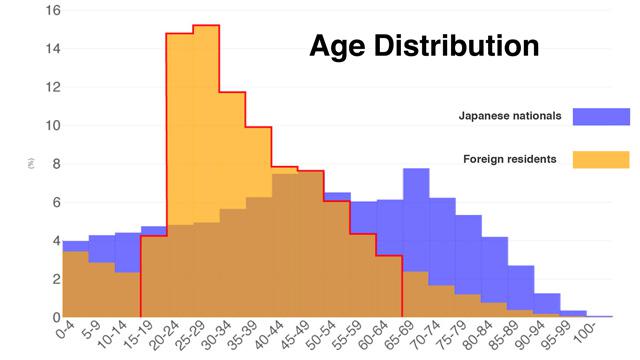Rural beaches feeling the heat
Japan is seeing the effects this summer of the shrinking population. A beach in Yamagata Prefecture in the north hasn't opened due to the labor shortage. The community association managing facilities there said they couldn't provide lifeguards or nurses because not enough people signed up. The head of the local tourist association said the lack of young people in the area makes it difficult to secure staff.

The changing makeup of communities in Japan is reflected in recent statistics. According to the Internal Affairs Ministry, the Japanese population fell for the 9th consecutive year to 125.2 million as of January 1st, 2018. The decline was the largest since the survey began in 1968.
But the numbers also reveal some emerging new trends. The population of foreign residents in Japan grew to 2.49 million. That's the highest since the ministry began counting 5 years ago. Year-on-year growth was 7.5%, and the total foreign population increased 24.6% from 2014.

Most foreign residents are working age
This graph shows that 84.8% of foreign residents fall between the ages of 15 to 64, the working age population. People in their 20s and 30s make up 51.9% of that group, a much younger population than that of Japanese nationals.

Year-on-year growth in non-Japanese in their 20s and 30s was the highest. The 20~24 age group grew 16.3% and those aged 35~39 grew 7.8%.
Junichi Akashi, an associate professor at the University of Tsukuba, is studying immigration policy. He says foreign residents showing the highest growth are those coming to Japan as students and those working under the "technical intern training" program. He said some students also come intending to work. He said he expects this growth to continue as Japan struggles with a severe labor shortage.
Population growth is mainly in rural areas
The number of foreign residents is increasing the most in rural prefectures. This is another point of contrast with the Japanese population, which grew in only 6 of the 47 prefectures, while the foreign population rose in all prefectures except Nagasaki.
Analysis over 5 years shows the highest increase in foreign residents in Okinawa at 55.9%. Shimane, Hokkaido, Kumamoto and Kagoshima prefectures also recorded high growth rates.

Professor of Economics at Kwansei Gakuin University, Yasushi Iguchi, says more businesses in the regions are employing foreign workers under the "technical intern training" program. They are doing this as young Japanese in those towns continue to migrate to the bigger cities after finishing high school.
A new program under discussion
The Japanese government plans to revise the immigration law as early as next April to bring in more foreign workers. Under the new law, non-Japanese with specified skills will be granted new status to stay for up to 5 years and work in a limited number of industries.
The government aims to boost the workforce in 5 sectors most affected by the labor shortage. These include the construction industry, shipbuilding, accommodation, agriculture and nursing. Applicants will have to pass an exam proving their skills and Japanese language proficiency. The government says it will consider allowing the new status holders to bring their families and stay in the country indefinitely if they can prove they have specialized skills.

Professor Iguchi says he expects the number of foreign residents will continue to increase, especially in rural areas, where Japanese youth are leaving. He estimates the number will rise to about 6 million by 2060, even under current immigration policy.
Iguchi says Japan will benefit from this if it sets up adequate programs to integrate foreign residents into the community.
Professor Akashi says it is important that foreign workers have the same rights and working conditions as Japanese, and that the government should develop a comprehensive program to oversee this issue, rather than leave it up to multiple authorities.
